Power electronics training set
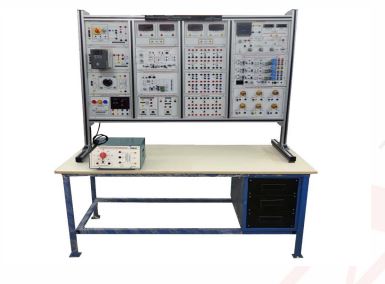
Order Code: 24257587.8
Category: General Lab Equipment V
Selenium rectifier Rated alternated voltage: 30 Vrms Rated continuous voltage: 24 Vav Rated continuous current: 10 Aav Group of diodes Direct average current: IFAV = 12 A Direct non repeti...
SPECIFICATION
Selenium rectifier
-
Rated alternated voltage: 30 Vrms
-
Rated continuous voltage: 24 Vav
-
Rated continuous current: 10 Aav
Group of diodes
-
Direct average current: IFAV = 12 A
-
Direct non repetitive overload current:
-
IFSM = 75 A (tp = 10 ms)
-
Repetitive peak reverse voltage: URRM = 1000 V
-
Recovery reverse time: trr = 65 ns max
Group of SCR
-
Direct average current: ITAV = 7.6 A max.
-
True RMS value of the direct current: ITRMS = 12 A
-
Max. repetitive reverse voltage: URRM = 800 V
-
Trigger current: IGT = 15 mA max.
-
Trigger voltage: UGT = 1.5 V max.
-
I2t = 72 A2s
Group of Triac
-
True RMS value of the direct current: ITAV = 8 A max.
-
Non-repetitive peak current:
ITSM = 70 A, 50Hz (77A, 60Hz) -
Max. repetitive reverse voltage: UDRM = 800 V
-
Trigger current: IGT = 25 mA max. (all the quadrants)
-
Trigger voltage: UGT = 2.5 V max.
-
State keeping current:
-
IH = 25 mA max.
-
I2t = 24 A2s
Group of MOSFET
-
Drain-source voltage: UDS = 400 V
-
Continuous drain current: ID = 10 A
-
Drain-source on-state resistance: RDS(on) = 0.55 Ω
-
Gate-source voltage: UGS = +-20 V
Group of IGBT
-
Collector?emitter voltage: UCES = 600 V
-
Continuous collector current: Ic = 24 A at Tc = 25ºC
-
Collector?emitter saturation voltage:
-
UCEsat = 1.8 Vtyp at Ic=15 A
-
Gate?emitter voltage: UGE = ± 20 V
Voltage Reference Generator.
-
Power supply: +15 V ; 0 V ; -15 V
-
Range of the continuous regulation reference signal:
from - 10 V to + 10 V, from 0 to + 10 V -
Range of the step reference signal:
from - 10 V to + 10 V, from 0 to + 10 V -
Switch for selecting between internal potentiometer reference signal and external reference signal
-
Switch for selecting between the 0 / ±10 V range and the 0 / +10 V range.
Trigger point limiter
-
Stability limit for rectifier: 0° to 180°
-
Stability limit for inverter: 180° to 0°
-
Power supply: +15 V / 0 V / - 15 V
Two pulse control unit.
-
Power supply: +15V/ 0V / - 15V (25mA)
-
Synchronization voltage: 1 to 440 V
-
Control voltage Uc: 0 V to 10 V
-
Trigger angle: 180° to 0°
-
Number of outputs: 2 x 2
-
Possibility of pulse train or single pulse.
-
Possibility of selecting two natural switching points: 0° and 30°.
-
Inhibit voltage:
UINH = 15 V (open): trigger pulses.
UINH = 0 V: no trigger pulses
Six pulse control unit
-
Power supply: +15V/0V/? 15V (300mA)
-
Synchronization voltage: 1 to 440 V
-
Analogue control voltage Uc: 0 to 10V
-
Digital TTL control: DWH = FH...FFH (15...255)10
-
Trigger angle: 180° to 0°(300°...120°/60°...240°)
-
Number of outputs: 3 x 2
-
Possibility of pulse train or single pulse.
-
Possibility of excluding the secondary pulse.
-
Possibility of selecting three natural switching points: 0°, 30° and 60°.
-
Inhibit voltage:
UINH = 15 V (open): trigger pulses
UINH = 0 V: no trigger pulses
PWM, PFM, TPC control unit
-
Power supply: +15V/0V/? 15V (600 mA)
-
Control voltage: Uc: 0 to 10V
-
PWM: 20?200 Hz/0.2?2 kHz/2?20 kHz
-
Duty cycle D = ton/T = 0?0.95
-
PFM: 5?50 ms/50?500 ms/0.5?5 s
-
Frequency: 20 Hz to 20 kHz
-
TPC: Hysteresis: UH = 0 to 2 V
-
Number of outputs: 2 x 2, with led indication of the status
-
Output amplifier: threshold voltage 5 V, short?circuit proof
Inhibit voltage:
UINH = 15 V (open): trigger pulses.
UINH = 0 V: longer pulses at certain outputs only
Run-up control unit
-
Power supply: -15 V/0 V/ 15 V
-
Input signal range: Ui = -10 V ... 10 V
-
Fine adjustment of the slew-rate:0.5 . . . 50 V/s
-
Fine adjustment of the voltage gain:0.1 . . . 1
-
Inhibit voltage:
-
UINH = 0 V: zero output voltage
-
UINH = 15 V
-
UINH = 15 V (open): output voltage U0 runs up and output UINH = 0 V
PID Controller
-
Power supply: +15 V ; 0 V ; -15 V
-
Input summing node for two different reference variables UR and
UC and for one controlled variable UA. -
Signal voltage range: -10V .... +10V
-
Parameters of the controller continuously adjustable
-
Proportional gain: Kp = 0 ... 1000
-
Time of the integral action: TI = 1ms ... 100s
-
Time of the derivative action: TD = 0.2ms ... 20s
-
Reset input of the integral controller.
-
Output summing node to add or subtract noise variables.
-
Measurement terminal for the error signal
-
Adjustment screw for the output offset.
-
Three led indicators of the sense of deviation.
-
Coarse and fine adjustment of the proportional gain Kp, of the
time of the integral action TI and of the time of the derivative action TD. -
Indicator of over-range: led "over" on when the output voltage is higher than 10 V or lower than -10 V.
-
Input Ioff for resetting the I controller
Absolute value generator
-
Power supply: -15 V/0 V/+15 V
-
Input signal range Ui: -10 V . . . + 10 V
-
Adjustable gain: 0 . . . 1
-
Inverting control input
-
UINV = 0 V: the input signal is inverted
-
UINV = 15 V or disconnected: the input signal is not inverted
-
Inhibit voltage:
-
UINH = 0 V: the output signal is zero
-
UINH = 15 V (open): the absolute value circuit is active
-
Gain and Offset Adjust
-
Power supply: +15 V; 0 V ; -15 V
-
Voltage interval of the input signal: -50 V, ..., +50 V
-
Adjustable level through the setting of the gain: 0 ....1, 0.... 10, 0.... 100
-
Attenuation of the pulse signals.
-
Time constants: 0,1 .... 10 ms; 10.... 100 ms
-
Offset voltages that can be connected: -10 V.... +10 V
-
Coarse setting through rotary switches.
-
Potentiometer fine setting
Mains transformers
-
Power supply: three?phase from mains
-
Protection through three?pole magneto?thermal switch
Capacitors
-
Rated value: 2 x 1000 μF
-
Rated voltage: 385 V
-
Protection against polarity inversion.
-
Discharge resistance: 330 kΩ (t = 330 s
Super-fast fuses.
-
Nominal voltage: 660 Vac
-
Nominal current: 3 x 6.3 A , 3 x 10 A
Switching transformer
-
Ferrite core N27 without air gap.
-
Primary: 2 x 115 V, 2 x 48 turns
-
Thermal protection: 2 x 0.6 A
-
Secondary: 2 x 15 V/ 4.5 A, 2 x 7 turns
-
Inter-winding shield.
-
Rated power: 135 VA
-
Rated frequency: 15 kHz
Trigger pulse switch
-
Two pulse inputs.
-
Two control inputs.
-
Eight electrically isolated pulse outputs.
-
Power supply: +15 V
Switching logic
-
Input Xn for torque comparator (speed set point value).
-
Input Xi for current comparator with adjustable limit threshold.
-
Output SA and SB for the corresponding inputs of the
-
Trigger pulse switch with led indication of the active converter.
-
Output INV for the corresponding inverting input of the absolute value generator.
-
Output INH for the corresponding inhibit input of the two
-
pulse control unit, with adjustable delay time from 10 ms to 2 s and led indication of the commutating time.
-
Current comparator output C for EXT selection input of the active elements of the adaptive PI controller.
-
Power supply: +15 V/0 V/?15 V
Phase control fault simulator
-
Power supply: 110 to 230 V, 47-63 Hz
-
Ohmic load: 1.2 kW max
-
Isolation amplifier
-
Isolation amplifier, channels A, B, C, E:
-
Frequency range: dc to 80 kHz.
-
Input voltage (between 0 and U)
-
Max 620 Vdc/460 Vac
-
Input resistance Ri = 1 MW in all ranges
-
Three?stage attenuator: MT = 1: 1; 1/10; 1/100
-
Accuracy: ±2% of full scale range Input current (between 0 and I)
-
Max: 10 A continuous; 16 A for t< 15 min; 20 A for t<2 min.
-
Internal resistance: 30 mw in all ranges
-
Two?stage attenuator: MT = 1 V/A; 1/3 V/A
-
Accuracy: ±5% of full scale range
-
Five outputs: A, B, C, D, E with led for over range indication
-
Output resistance RO: 100 W
Multiplexer:
-
Mux channels, selectable: 1 to 8 (4 x signal; 4 x zero line)
-
Gain attenuator, adjustable: 0.2 to 1.
-
Y?position, adjustable: ?8 V to + 8 V.
-
Trigger source, switchable to A, B, C, D, E.
-
Mux frequency, adjustable: 50 kHz to 500 kHz (typical).
-
Two BNC outputs for oscilloscope
Mathematical module and filter:
-
Functional modes for channel D: Addition A+B; subtraction A?B; multiplication AxB/10 or AxB; reconstruction of the phase voltage LIN (A, B, C) from the line?to line voltages; channel E switched into channel D for multiplexing.
Filter
-
Low pass active filter of the 2° order required for the recovery
of the fundamental wave out of the PWM signals. -
Cut?off frequency: 1 kHz.
-
Space vector indicator
-
Voltage vector: indication with 7 led.
-
Magnetic flux vector: BNC outputs X e Y for oscilloscope
-
Power supply.
-
Single?phase from mains Frequency: 50/60 Hz
Support with 3 shunts 1 ohm.
-
Resistance: 1 Ω
-
Accuracy: ± 1%
-
Max. current: 2.5A
Support with 3 shunts 0.1 ohm
-
Technical features:
-
Resistance: 0.1 Ω
-
Accuracy: ± 1%
-
Max. current: 8 A
Frequency converter
-
Output voltage: 3 x 0...230 V
-
Output current: 3 x 8 A max.
-
Supply voltages:
-
Power circuit, 1 x 255 V max, 50/60 Hz control circuit,
-
Single?phase from mains
PWM Control Unit
-
Control unit used in conjunction with the frequency converter to build a voltage?source inverter which operates with PWM control.
-
All of the control, monitoring and measuring functions
are integrated into the control unit (a microcontroller implements the management via a program stored in
EPROM) while the frequency converter contains solely
the power components. -
A PWM modulator controls the power transistors of the inverter and thus generates a sine?shaped motor current.
-
Modulation possibilities: PWM, VVC, trapezium shaped and


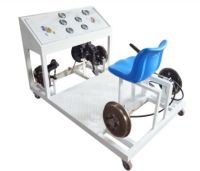
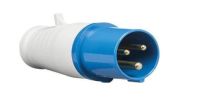
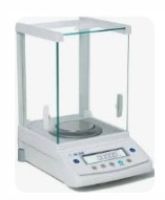
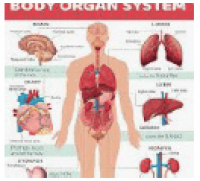

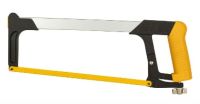
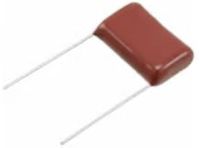

 91-9829132777
91-9829132777